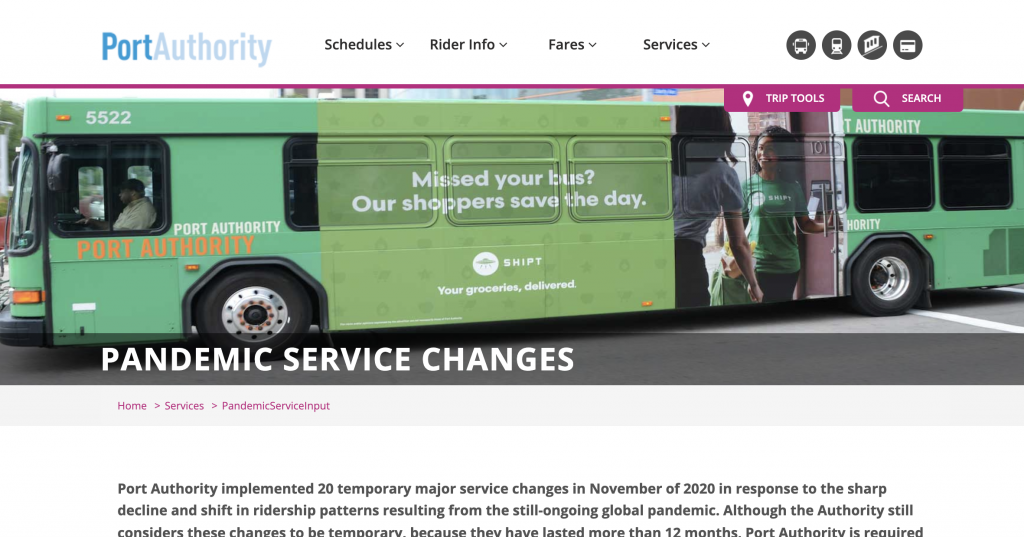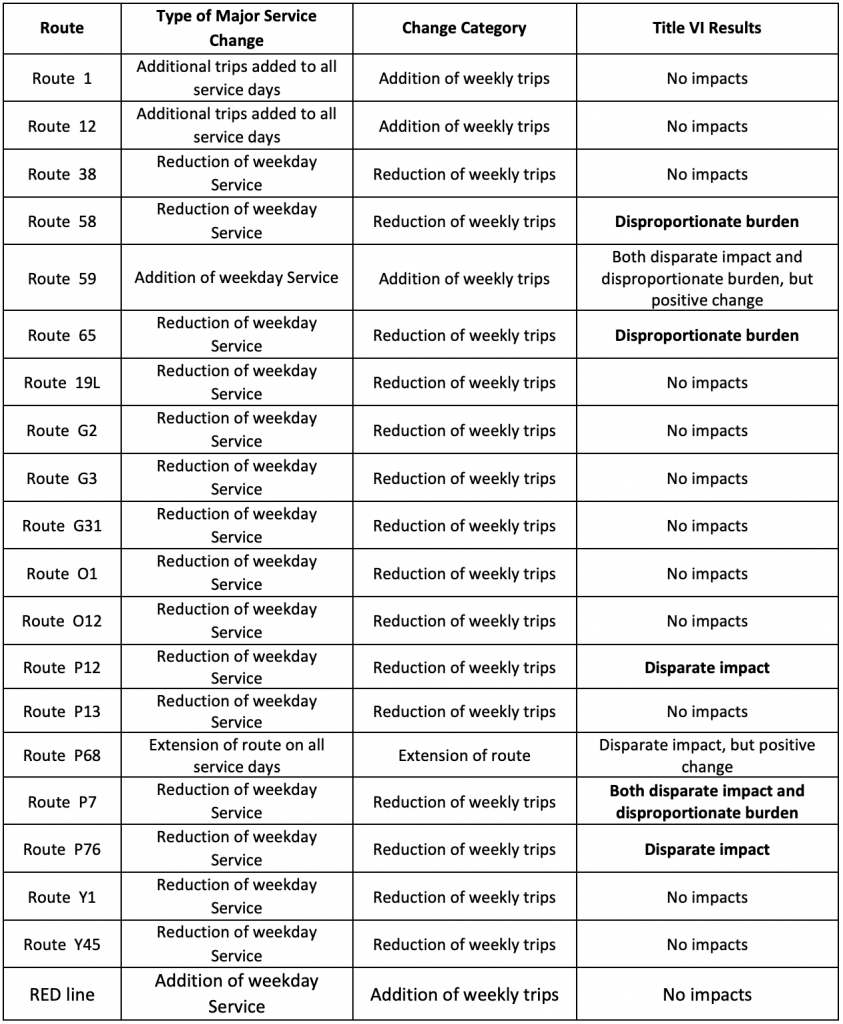
Temporary pandemic service changes are being extended. Has the pandemic affected your transit service and access in either a positive or negative way? It’s time to make your voice heard!
Our public transit system has been completely upended by the pandemic. Ridership is in flux: while many workers shifted to work-at-home arrangements, many more continued relying on transit to get to jobs, food, healthcare. Transit workers are strained: although 74% of PAAC employees are vaccinated, hundreds have been unable to work because of quarantine throughout the pandemic, and seven workers have lost their lives to COVID. Budgets are stressed: increased covid precautions, a shifting workforce and unstable state funding all threaten finances at our transit agency. All of these strains leave riders with worse service than we had pre-pandemic.
To deal with these complications, in November 2020 Port Authority made some pretty significant service changes. Some of these changes were good. Namely, Port Authority increased service on some routes that continued to have high levels of riders from essential workers and low-income and minority riders. But many of the changes relied on significant service cuts on other routes. Although Port Authority tried to focus cuts mainly on commuter routes where the shift to remote working brought significant ridership drops, these routes were still essential connections for essential workers to access employment.
Even though these changes have continued for more than a year, Port Authority still maintains that they are “temporary”. We want to ensure that positive changes for riders are made permanent, and that there is a plan for restoration of our critical transit service that has been reduced.
Because these “temporary” changes have persisted for more than a year, Port Authority needs to document whether low-income or minority riders are disproportionately impacted by these changes, and to collect public feedback.
If the service changes you’ve seen have directly impacted you– in good or bad ways– sign up here to make sure Port Authority is hearing your experience:
Want to see specifics about the changes that they implemented?
Port Authority is proposing to continue the “major service changes” that were made to 30 different routes in November 2020. (A “major change” is a change that affects more than 30% of a route’s weekly trips, directional miles, or service hours OR the addition of a service day.) Of these 30 major service changes, 10 routes had added weekend service on a permanent basis (a big victory for riders who were active with numerous PPT campaigns), and 20 are considered temporary pandemic-related service changes.
Here’s a table from Port Authority’s website that summarizes what those 20 temporary COVID-related changes were:
| Major Service Change Type | Transit Routes Affected |
| Addition of all service day trips | 1, 12 |
| Addition of weekday trips | 59, RED |
| Route extension | P68 |
| Reduction of weekday trips | 38, 58, 65, 19L, G2, G3, G31, O1, O12, P12, P13, P7, P76, Y1, Y45 |
Because these changes have gone on for more than a year, Port Authority needs to conduct a “Title VI Analysis” to show that the changes do not disproportionately burden or impact minority or low-income riders (Disproportionate burden means low-income riders were disproportionately affected. Disproportionate impact means that minority riders were disproportionately affected). You can see a copy of Port Authority’s Title IV for these service changes here. Below is a screenshot of a table in the report that shows whether the changes have a disproportionate burden and impact:

We want to see service restored on all of these routes as soon as possible, particularly routes where changes disproportionately affect low income and minority riders. For that to happen, we need to hear from Port Authority what is impacting the return of needed service, and what the plan (thresholds for funding, transit worker hiring, COVID case levels?) is for bringing transit service back to pre-pandemic levels.
Here are some questions we’ve brainstormed for folks to raise during the public hearing, but feel free to come up with your own questions! Personal experience is also the most compelling testimony:
- What are the conditions and criteria that determine when or if service is restored to these routes?
- Cuts to the 58 disproportionately burden low-income riders. However Port Authority’s Title IV analysis claims that these cuts were not so harmful because riders within the walkshed of this route have access to other routes. How does the service on these other nearby routes compare to service on the 58? What critical destinations (employment centers, grocery stores, healthcare) are more or less accessible to riders on the adjacent lines?
- It is not clear why Port Authority chose August 2019 and 2021 as the comparison months. Ridership data is showing an uptick from August 2021. Would choosing different pair of months for comparison make the estimates look different?
- Studies show that service cuts lead to decreased ridership. Will continuation of service at reduced frequency lead to further decreases in ridership?
- Port Authority last conducted a (detailed) ridership survey in 2014. A study conducted in Phoenix, AZ showed that Census data might not be very representative of ridership survey data. For the routes facing an extension of service cuts, could there be a substantial difference about ridership demographic impacts if they were to use American Community Survey data instead?